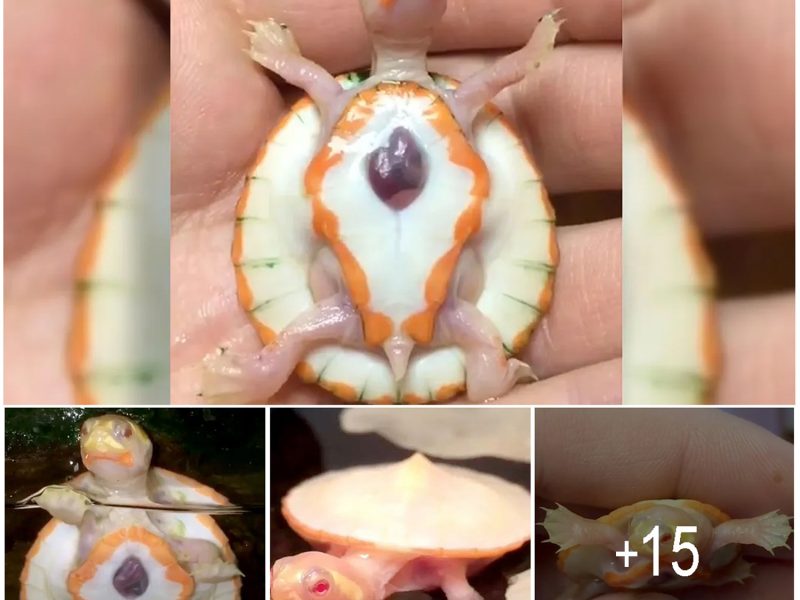The Indian golden oriole (scientific name Oriolus kundoo) is a type of oriole that has the same features as the Eurasian golden oriole. However, you’ll notice that there are more yellows on its tail.
This bird has a tough bill, a long tail, and long winds. The male Indian golden oriole features an intense yellow plumage that covers the majority of its body and has black tails and black wings.
It also has an accent in a form of a black stripe (it looks like an eyeliner) that goes across and at the back of his eyes. A female Indian golden oriole on the other hand has a sap green color at the top part and dull dark-hued streaks at the bottom.
The common feature among them is their red irises. As these birds feed, they produce a harsh “krrrrrr” sound.
These species can be found in Central Asia and the Indian subcontinent. It has a wide range of habitats.
These include woodlands, parks, plantations, orchards, open country with dispersed trees, open deciduous forests, mangroves, and forest edges. They look for food atop trees, eating insects and fruits and they can also hunt for flying insects.
Today we’re appreciating this bright yellow creature. Let’s take a look at the picture of this species.
The eggs of the Indian golden oriole are laid between early May and late June. Birds in the south will lay earlier than those in the north.
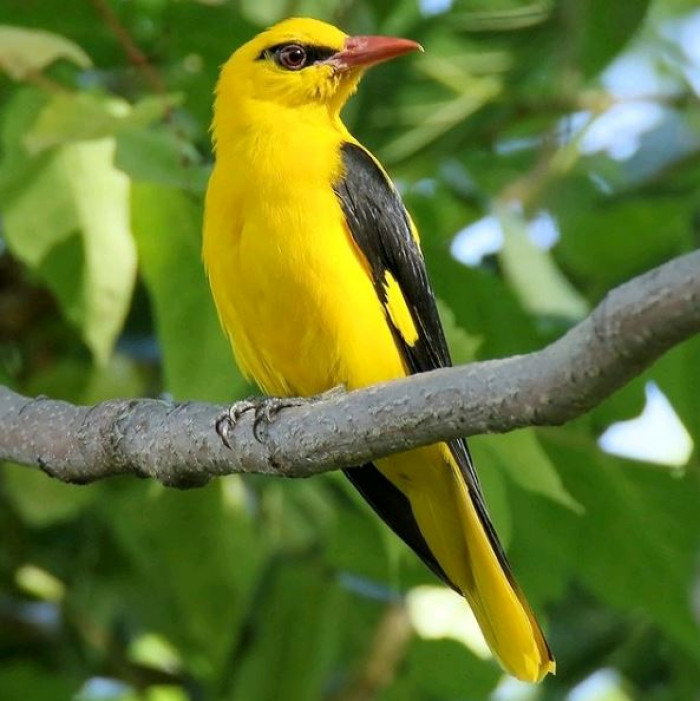
The females are mostly responsible for building the nest. Meanwhile, the males are the ones who collect the raw materials for the next.
They brink cobwebs, leaves, barks, stems, and other materials. The female will then build a cup-shaped nest where she can lay her eggs.
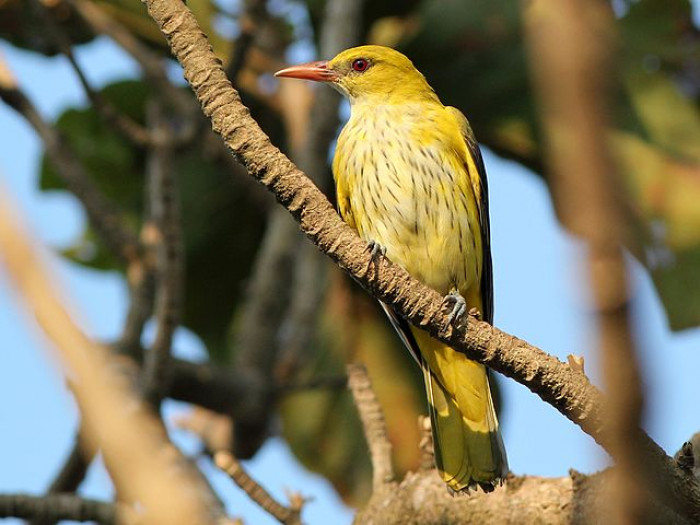
The nest hangs like a hammock under the fork. The body of the nest is made of different materials.
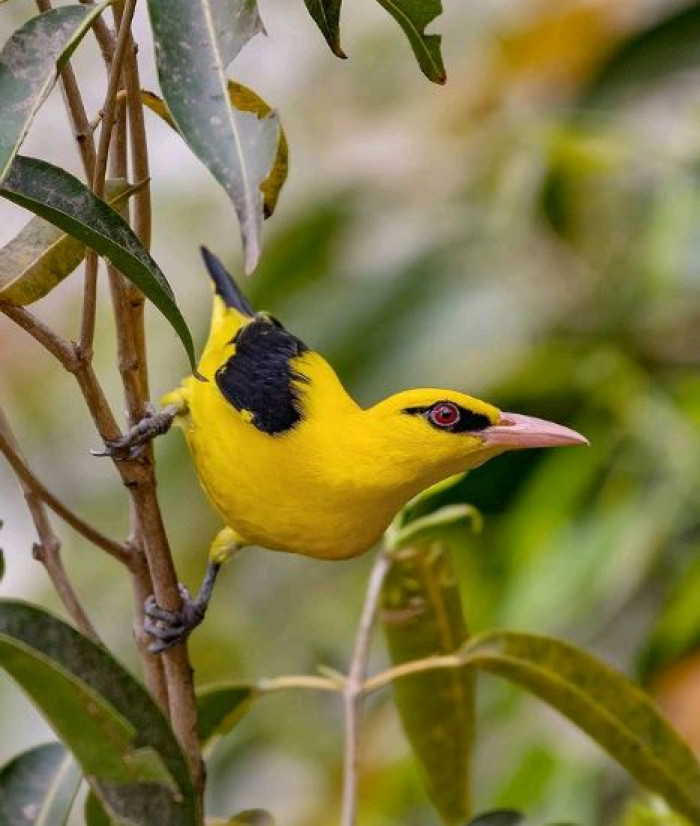
Bark fibers or grass hold the nest together (about 20 to 40 cm in length). Other nests are stuck with saliva.
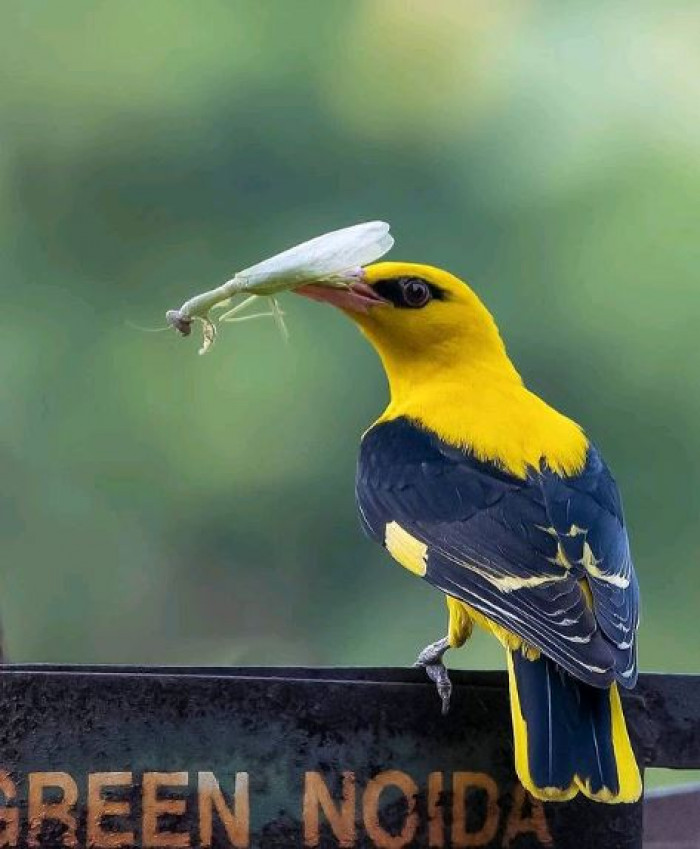
The female Indian golden oriole lays about three to four eggs.
The incubation period is around 16 to 17 days. It is done by both the male and female birds.
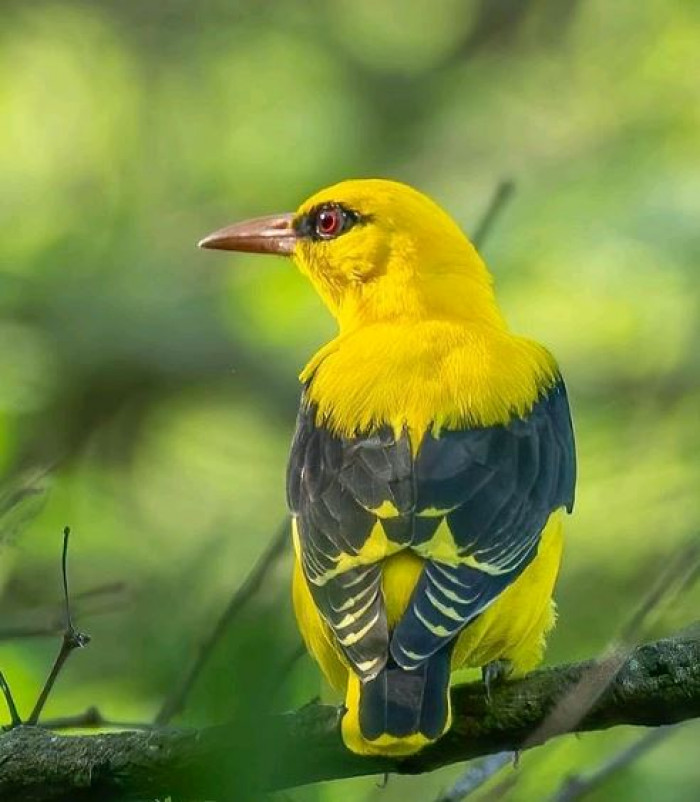
The young are then fledged after 16 to 17 days.

Scientists have yet to list the lifespan of the species. For reference, the Eurasian kind lives around eight to 12 years.
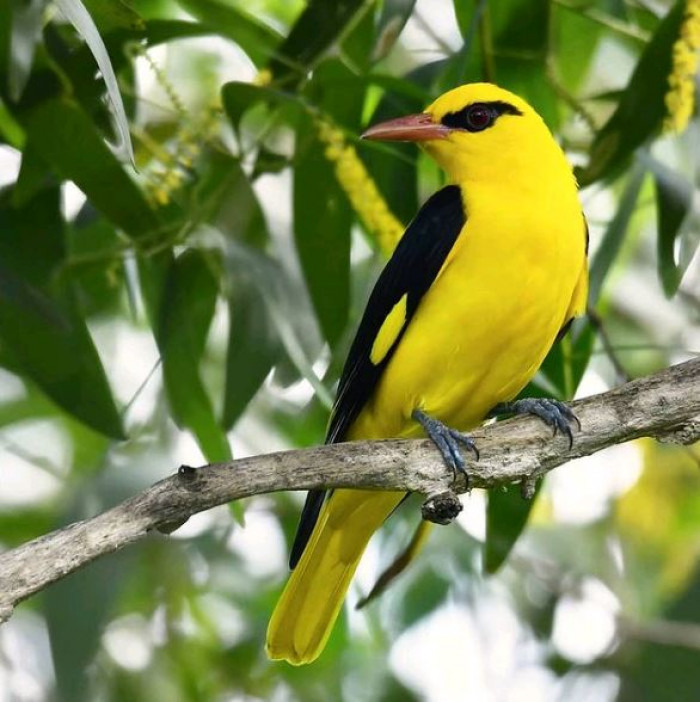
International Union for the Conservation of Nature classifies the Indian golden oriole as least concern.
These birds are not rare. Aside from having a stable population, they can be seen in their natural habitat regularly.
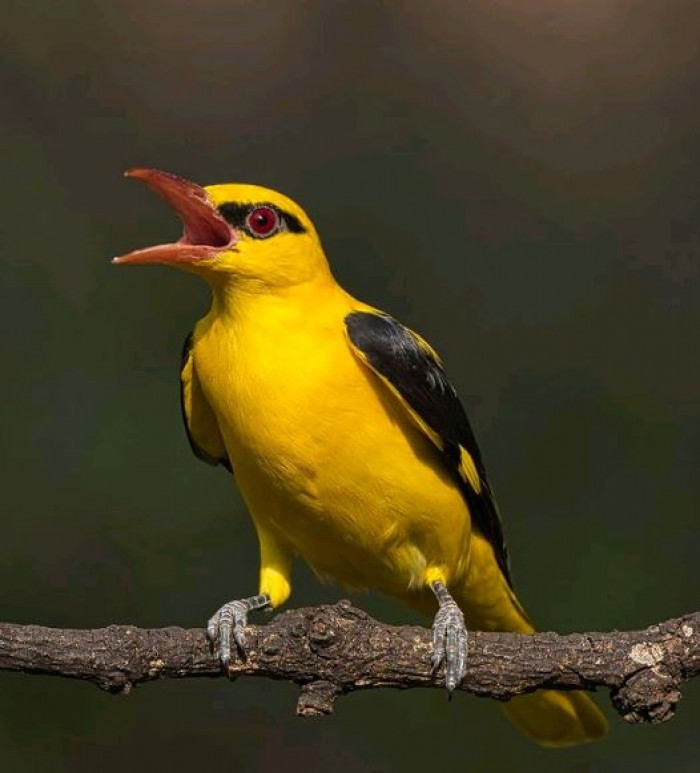
Hear the Indian golden oriole sing by watching this video.
The bright yellow color of the Indian golden oriole makes the species adorable
But despite their cuteness, experts say that they should not be kept as pets. Remember that they are partial migrant birds.
There is no specified reason behind why they shouldn’t be caged. But possible that they don’t do well when they’re in captivity.
They may neither be rare nor endangered. But it’s best to let these birds fly around freely and appreciate the beauty they contribute to nature.” placeholder=”Nhập HTML”>
